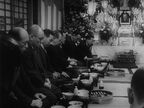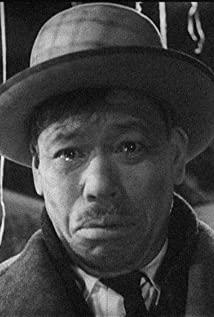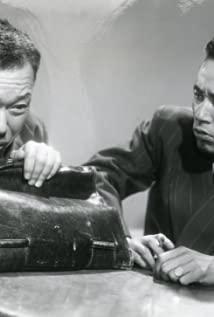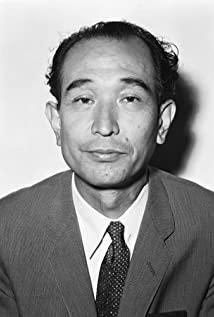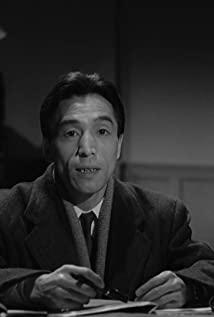In "Clouds", the final death deepens the tragic sense of women's pursuit of love, and the emotional experience also reflects the decadence of post-war Japan; "Dream" consists of multiple dreams, which point to reflections on war, nuclear crisis and environmental damage respectively; "Battle of No Kindness and Righteousness" is extremely evil and outrageous, and the turning point of the story is the death of each character.
Coincidentally, the other two films, "Brother" and "Desire to Live", both use "Death Threat" as the midpoint of the story, and the film is also divided into two parts with obvious differences. In "Brother", the playful and surly younger brother begins to have an awakening of consciousness because of the approaching death, and begins to be considerate of the people around him.
It also uses death as a dichotomy between the story and the characters. "The Desire of Life" is much more brilliant, which must be examined from the perspective of the play.
"Desire to Live" tells the story of how Kanji Watanabe, a civil servant suffering from advanced gastric cancer, faced the last moments of his life. The whole film is about death and life, and it is death that gives birth to new life.
The film begins with an air of death shrouded in death, and the first shot is an X-ray of Watanabe's stomach, illustrating a serious condition unknown to the protagonist. This gives the audience a bystander perspective to look at the life of the character.
When his health was detected, he collapsed, his face was haggard, his eyes were either desperately wide or erratic, like a walking dead.
When Watanabe walked out of the street from the hospital, the film used a medium shot, placing the perspective on him, and then the camera slowly pulled back, the scene continued to expand, and there were vehicles passing by in the foreground, and the silence in the shot was deafening. The roar broke, referring to the body of the life being repeatedly covered by the vehicle, and the vitality he revealed was not as good as the dead objects of the vehicle, which were dissolved in the noise. The scene vividly portrays Watanabe's fading vitality through the dual contrast of movement and sound.
Not long after the story begins, a situation arises where a group of housewives apply to the city government to fill in the cesspool and build a park on top of it. Originally, a small proposal circulated among the Citizens Division, Civil Engineering Division, Parks Division, District Health Office, Sanitation Division, Environmental Hygiene Division, Prevention Division, Epidemic Prevention Division, and Assistant Mayor, and finally returned to the Citizens Division. This ironic predicament directly points to the machinery and prevarication of government personnel in doing things, and also points to the "dead" (rigidity) set up by government agencies.
Watanabe Kanji is one of them. He has maintained full attendance for nearly 30 years. He seems to be serious. In fact, under such a system of "performing their own duties", his diligence and diligence are only meaningless busyness.
"Actually he died twenty years ago," the narrator pointedly reveals the truth. The film asks a question from the very beginning: What is living? When not facing death, Watanabe Kanji did not think about this issue.
Watanabe is like a person who has fallen into the rapids of the sea, and he regards the people around him as a life-saving straw. Entrusting the rest of his life to family affection and indulgence in the world of wine and wine failed, and was finally reminded by the words of the resigned employee that he hoped to make his work meaningful. When he walked down the stairs, the "Happy Birthday Song" screened for other people's birthdays was also there. Celebrate its rebirth.
Surprisingly, it wasn't long before Kanji Watanabe made up his mind to start solving the problem of building the park. The film suddenly took a major turning point - the protagonist of the story died, and in the following time, the main space of the film was basically locked in the mourning hall. Watanabe's rush to build the park during his lifetime was made up of memories of people from various government departments.
This structure is very bold. In the middle of the story, the protagonist died. It is also a very rare way of writing in the history of film. According to the screenwriter Hashimoto Shinobu "The Image of Compound Eyes", the idea came from the hero of a small country. When he proposed this proposal, he had a fierce dispute with Akira Kurosawa.
This structure is reminiscent of Akira Kurosawa's previous work "Rashomon". They are similar but different. "Rashomon" is to blur a truth through the expressions of multiple people, and "Desire of Life" is to use multiple people. Looking back on Watanabe Kanji's impressions before his death, he collages a fact that everyone naturally ignores.
Its function has two aspects. First, the characters die before the story is over, and the way of telling the story by others avoids the "sense of the main melody" brought by the flat and straightforward narrative;
On the other hand, the fact that Kanji Watanabe was building the park was pieced together through the memories of employees in various departments, which further shows that the thinking of government employees has been completely solidified by their institutional settings, and they are very firm that this is impossible. Done by one person. In fact, Kanji Watanabe has become the most critical link for the effective operation of each department in a case. In this process, the more difficult Watanabe is, the more ironic he is about the working mechanism of government agencies.
In the film, Akira Kurosawa chose "Song of the Phoenix Boat" as the theme song, and Watanabe sang it twice, with obvious differences. The first time, he followed the wandering writer to indulge in a bar, singing this soothing and moving love song in a low and sad way, which fits his fearful mood when facing death; His singing is engrossing and moving, and although death is really imminent, he is already chasing the value of life.
The real life is not to waste time, to do meaningful things in ordinary life.
When commenting on the film, Tadao Sato said: "The Desire of Life" is a story of a mediocre person jumping out from among other mediocre accomplices to become a hero." In this sense, the film is inspiring. In this story, there is an employee who seems to have inherited the spirit of Watanabe. He is upright and motivated. He is finally suppressed by the newcomer Citizens Section Chief. All he can do is go to the park built by Watanabe to pay tribute.
So, the onlooker's perspective brought to the audience by the narration is transformed by this character. The audience pointed by this film, after watching this "inspirational" film, will we return to the river of mundane life? ?
View more about Ikiru reviews




